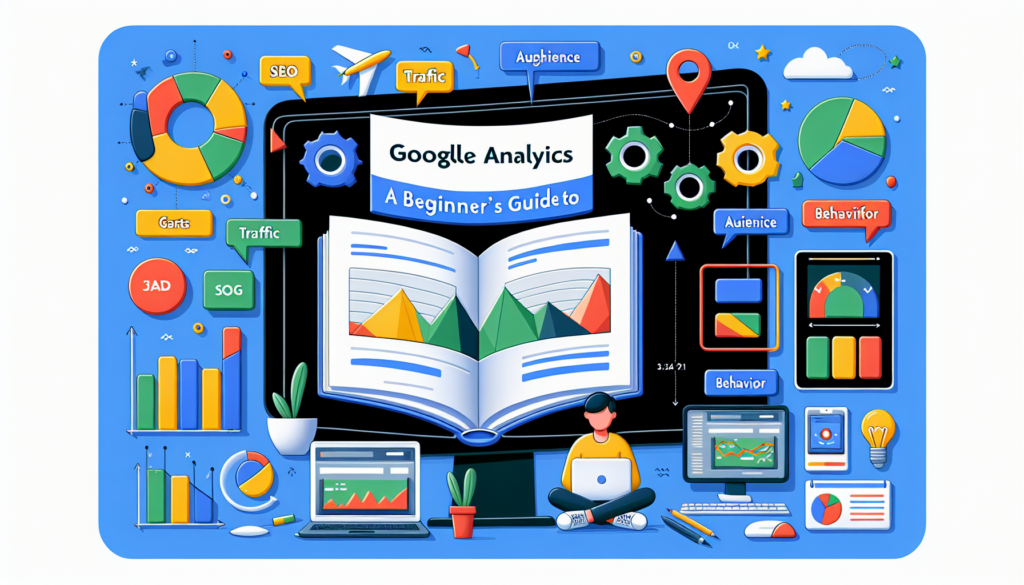In the digital age, web analytics has become a fundamental cornerstone for understanding and optimizing the marketing strategies and online presence of any business. Google Analytics, the free web analysis platform developed by Google, is an essential and multifaceted tool that allows professionals to better understand user behavior on their website. By delving into its numerous functions and understanding the interpretation of its data, a company’s digital performance can be significantly improved.
Understanding the Google Analytics Interface
To get started with Google Analytics, it is crucial to familiarize yourself with its user interface. This is divided into main areas: “Real Time”, “Audience”, “Acquisition”, “Behavior”, and “Conversions”. Each section offers detailed insights into different aspects of website activity.
Audience
The Audience section provides information about the users, such as demographics, interests, geography, behavior, technology used, and user flow. This data allows audience segmentation and the adaptation of content and advertising to reach them more effectively.
Acquisition
In Acquisition, the analysis focuses on how users arrive at the website. It details traffic by channels such as organic search, referrals, social networks, and paid campaigns. Understanding these data is crucial for optimizing marketing strategies and allocating budgets more efficiently.
Behavior
The Behavior section centers on what users do on the website. It includes data on the most visited pages, time spent, bounce rate, and events. This is vital for assessing the effectiveness of content and site usability.
Conversions
Lastly, Conversions is where goals and conversion funnels are set up and monitored. Analyzing this section allows for a better understanding of the customer journey and optimization of the sales process or completion of other key actions.
Understanding Google Analytics Data
It is vital to move from simple access to data to its effective interpretation. Key performance indicators (KPIs), like conversion rates, bounce rates, and exit rates, provide a quick view of overall performance but must be contextualized within the specific objectives of each website.
Metrics Versus Dimensions
Metrics are quantifiable amounts that offer information on specific behaviors, such as “sessions”, “page views”, or “transactions”. Dimensions, on the other hand, are attributes or characteristics of that data, like “traffic source” or “geographic location”. The right combination of metrics and dimensions is crucial for obtaining meaningful insights.
Advanced Analytical Features
Advanced Segmentation
Advanced segmentation allows the analysis of data subsets, such as the behavior of new users versus that of returning ones. Applying custom segments can reveal opportunities for improvement in the approach toward different user groups.
Cohort Analysis
Cohort analysis studies user behavior by grouping them according to common characteristics over a specific period. This is especially useful for marketing campaigns and tracking the customer life cycle.
Behavior Flow Analysis
With behavior flow analysis, the path of users through the website is visualized. This helps to identify the most effective routes and potential friction points that cause users to leave the site.
Customization and Reporting
Custom reports are a powerful tool of Google Analytics. They allow the creation of reports tailored to specific needs by combining different metrics and dimensions, and by applying filters and segments to measure.
Implementation and Technical Configuration
Tracking Code and Configuration
To collect data, Google Analytics uses a tracking code that must be installed on all website pages. The correct implementation of the code and configuration of the parameters are essential to ensure the accuracy of the collected data.
Events and Goals
Events are user actions that can be configured to track specific interactions within a website. Goals, on the other hand, are objectives that reflect important business conversions and should be set in line with the KPIs.
Google Tag Manager
Google Tag Manager (GTM) is a tool that simplifies the management of tags, including Google Analytics tracking code, without the need for constant code changes on the site. GTM is essential for efficient and accurate management of tracking scripts and events.
Practical Applications and Case Studies
The theory and functions of Google Analytics come to life when applied to practical cases. The study of successful cases should include the presented problems, the analysis performed, the solutions implemented, and the results obtained, showing both a qualitative and quantitative approach.
Projections and New Developments
The field of web data analysis is constantly evolving. New features, such as Artificial Intelligence and machine learning, are being integrated to offer even deeper and more personalized insights. Professionals must stay updated with the latest improvements and best practices.
In conclusion, Google Analytics manifests as an indispensable tool that, when used correctly, unlocks torrents of valuable data. Mastering this tool is a crucial asset for any entity looking to transcend in the dynamic online world. This journey through its most technical and innovative aspects provides an invaluable guide for beginners eager to transform data into concrete and successful strategies.

